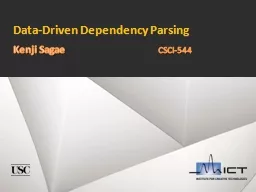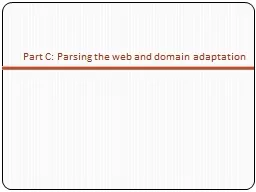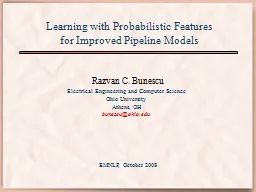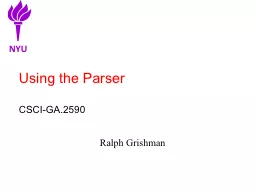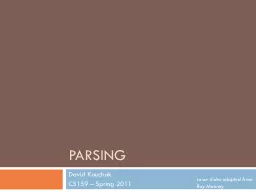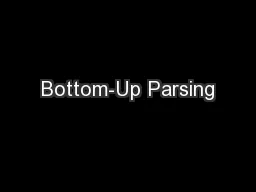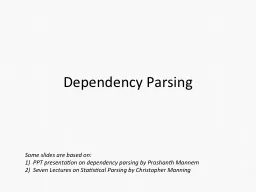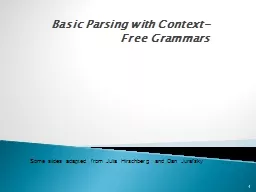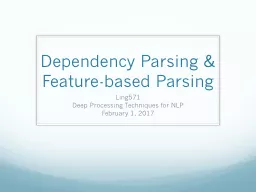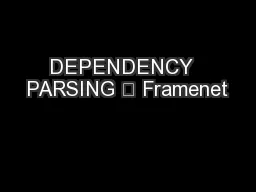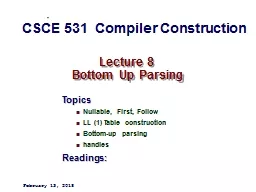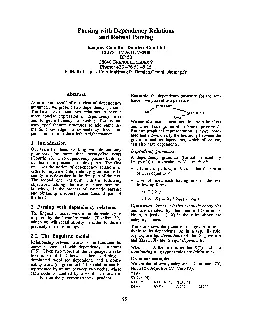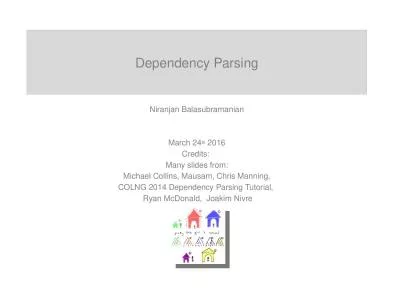PPT-Data-Driven Dependency Parsing
Author : yoshiko-marsland | Published Date : 2019-11-09
DataDriven Dependency Parsing Kenji Sagae CSCI544 Background Natural Language Parsing Syntactic analysis String to tree structure He likes fish PARSER S NP VP NP
Presentation Embed Code
Download Presentation
Download Presentation The PPT/PDF document "Data-Driven Dependency Parsing" is the property of its rightful owner. Permission is granted to download and print the materials on this website for personal, non-commercial use only, and to display it on your personal computer provided you do not modify the materials and that you retain all copyright notices contained in the materials. By downloading content from our website, you accept the terms of this agreement.
Data-Driven Dependency Parsing: Transcript
Download Rules Of Document
"Data-Driven Dependency Parsing"The content belongs to its owner. You may download and print it for personal use, without modification, and keep all copyright notices. By downloading, you agree to these terms.
Related Documents

